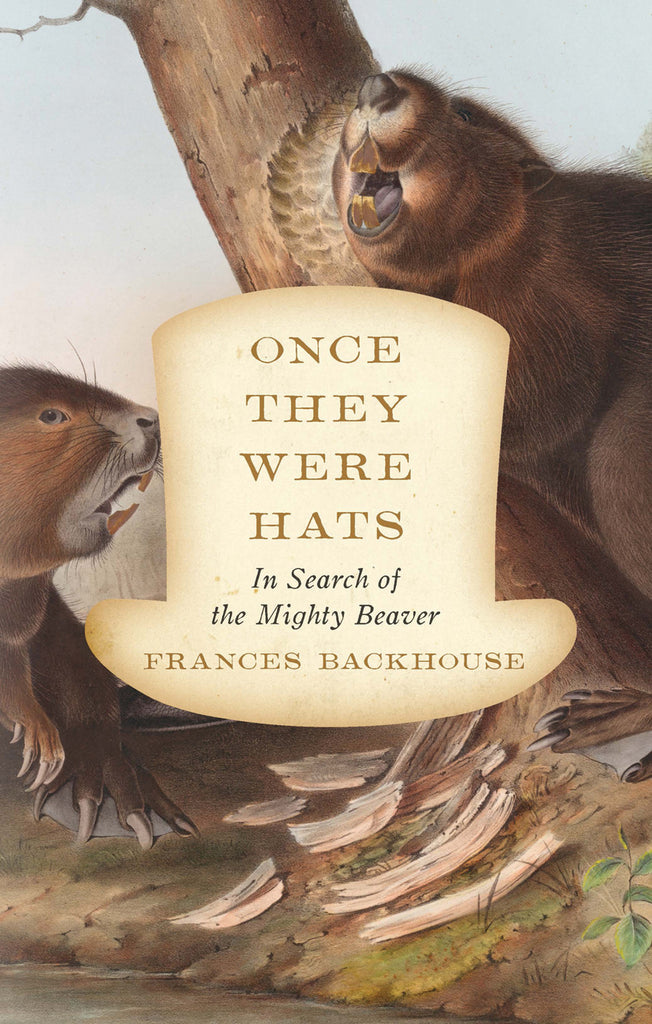Last night, this was the headline on Iowa’s The Gazette:
Discerning readers will be scratching their head and saying, “hey that’s not a beaver”. And they’d be right. It’s actually a ground hog! The paper posted a mislabeled photo by mistake. I wrote the author, Michael Castranova, last night and he immediately wrote back. This morning there is no photo, only a very interesting article about the pilgrims and the fur trade.
The Mayflower Pilgrims and Their World, a New History,” explains that, “In the 1620s, a single beaver pelt fetched the same amount of money required to rent nine acres of English farmland for a year.”
So to Weston and the Fellowship, this seemed liked a reasonable business risk: Put up the cash for a number determined folk who were in a rush to flee the country — King James I referred to the Puritans as “pestes,” and the 30-Years War was about to chase them out of the Netherlands where these one-time farmers had taken up clothing-factory jobs — and then, oh boy, just wait for those spiffy beaver pelts to come flowing back.
But as with many a business venture, several calculations came undone. One of the two hired ships sprung more leaks than a rusty colander and had to turn back. And, in their dash to get going, they’d shipped out in September 1620 rather than wait until spring. That meant by the time they reached North America, two months later, planting season — and one assumes, beaver-catching season — was well and truly past.
And, even worse, they landed 200 miles off course. What they found upon arrival was not other colonists but “a whole country of woods and thickets.” Almost half the colonists died that first winter, and the Mayflower was sent back to England in 1621 with no financial benefit for the investors.
Now I knew Canada was settled by folk looking for beaver pelts, but I had NO IDEA America was. The price of a pelt was worth a year’s rent for 9 acres of farmland? Think about that, nearly a decade in a prime live-work space that will provide your home and your income. For one lousy beaver. Who knew? I think when I made this graphic years ago I was just kidding. Apparently it was almost true, or would have been true if they knew how to find them. Considering that in 1620 when they left there hadn’t been beaver in England for nearly 200 years. Nobody knew what they looked like. And nobody’s grandfather could tell them how to catch one.
Onto a great article from Louise Ramsay about the issue of farmers shooting beavers, this time in the ecologist.

Scotland’s wild beaver ‘shoot to kill’ policy is illegal and wrong
The Tay Beavers began when three of the animals escaped from a wildlife park in 2001. Nine years later, having bred and dispersed and been added to by subsequent escapes from enclosures in the same catchment, they came under threat of official elimination in the autumn of 2010.
A campaign to save them led to a SNH study that estimated their numbers at 106-187 (midpoint 147) in 2012 and mapped their spread across hundreds of square miles of the linked catchments of the Earn and Tay, from Rannoch to Comrie, Blair Atholl, Forfar and Bridge of Earn.
The presence of beavers and the wetlands that they build also brings great improvements in biodiversity, and the mitigation of both flooding and drought by re-naturalisation of the waterways. Recent research by Dr Alan Law has shown how beaver dams reduce peak flow by an average of 18 hours. A fact he tweeted in reaction to a farmer who falsely accused the beavers of having made the flooding worse.
In California, beavers are also credited with restoring rivers, wetlands and watersheds, creating conditions for the return of Coho salmon and increases in their populations.
We are calling on SNH and the Scottish Government to immediately place a moratorium on the shooting of beavers as another breeding season approaches, and to afford the animals the legal protection they are due as soon as possible.
But above all the two bodies – and nature lovers everywhere – need to recognise that the return to Scotland of this wonderful keystone species is something to be enjoyed and celebrated.
 Nicely done, Louise. There are grand videos on the article too, as well as a link to Maria Finn’s California beaver article, so go see for yourself. Probably more so than any woman on the planet I feel a deep kinship with Louise who’s mild-mannered life was completely transformed by some unsuspecting beavers. She’s done a valiant job trying to keep all the correct people talking to each other, and managing some pretty challenging personalities with a single goal. And now, after finally getting the reprieve from the government they worked so hard to achieve, she is dealing with farmers shooting the beavers she worked to save.
Nicely done, Louise. There are grand videos on the article too, as well as a link to Maria Finn’s California beaver article, so go see for yourself. Probably more so than any woman on the planet I feel a deep kinship with Louise who’s mild-mannered life was completely transformed by some unsuspecting beavers. She’s done a valiant job trying to keep all the correct people talking to each other, and managing some pretty challenging personalities with a single goal. And now, after finally getting the reprieve from the government they worked so hard to achieve, she is dealing with farmers shooting the beavers she worked to save.
Battle on!



 Looks like
Looks like  Hot dam! Beavers — extremely weird, and essential to who we are
Hot dam! Beavers — extremely weird, and essential to who we are









































